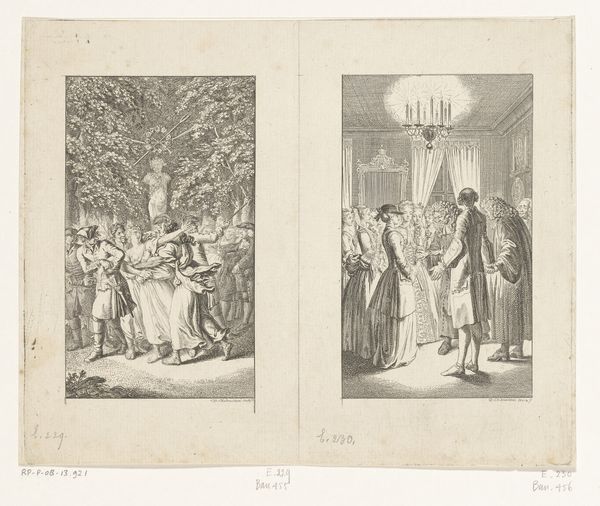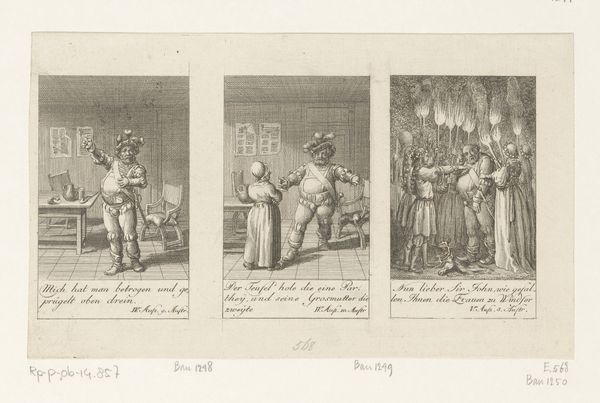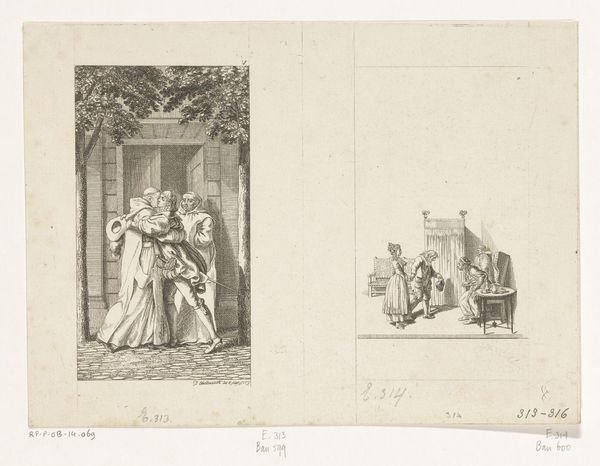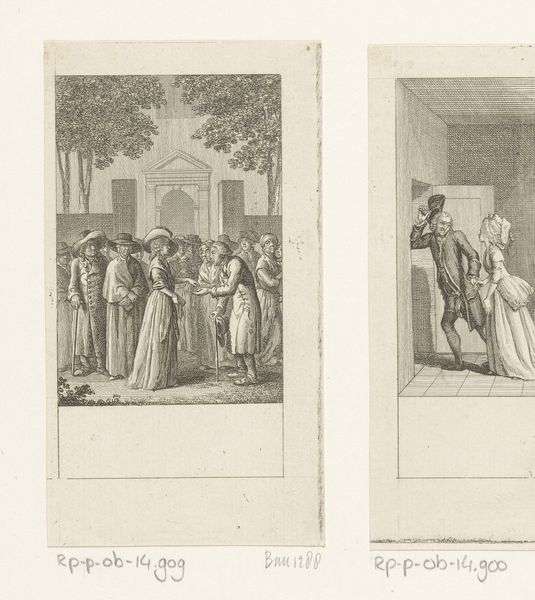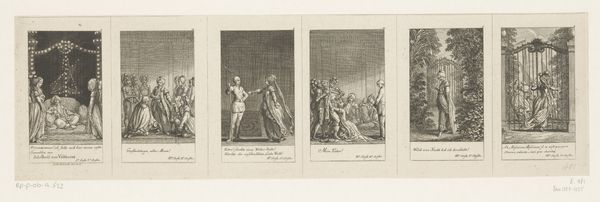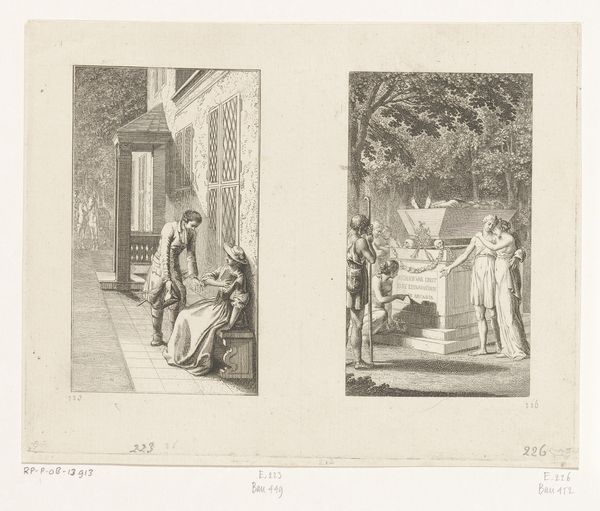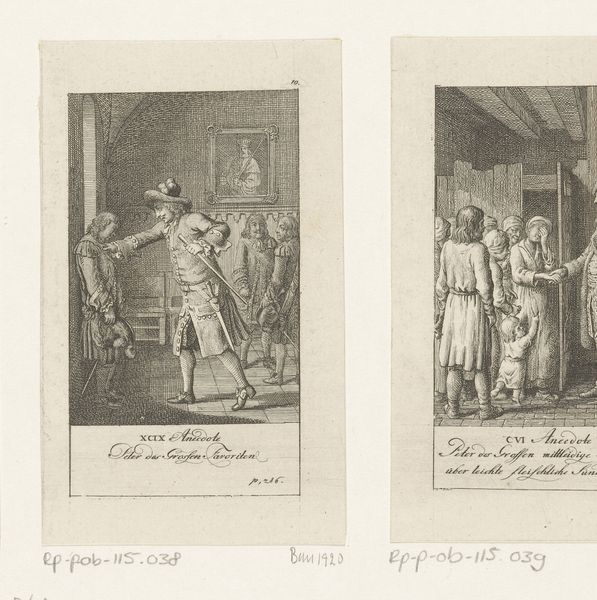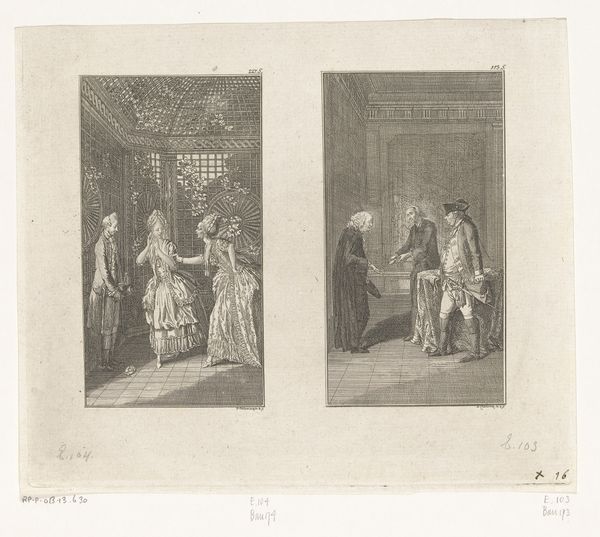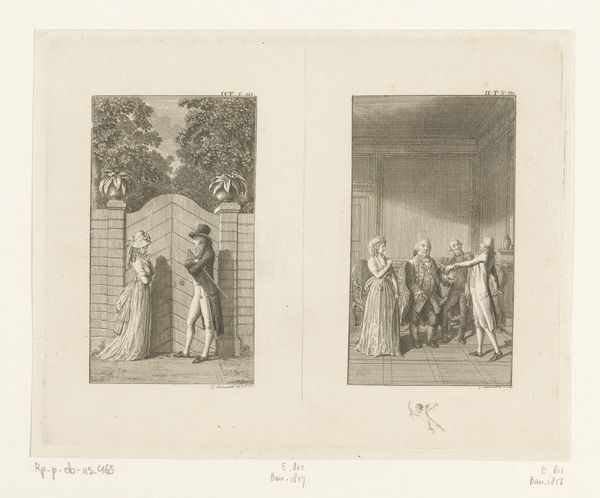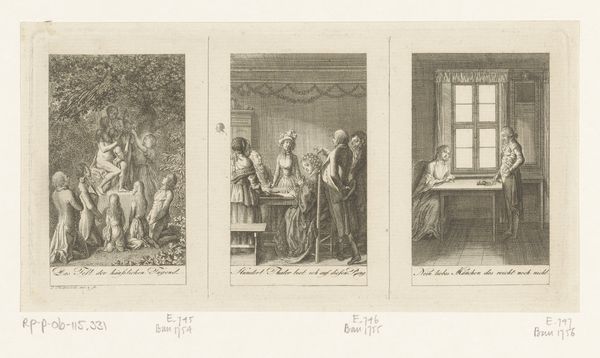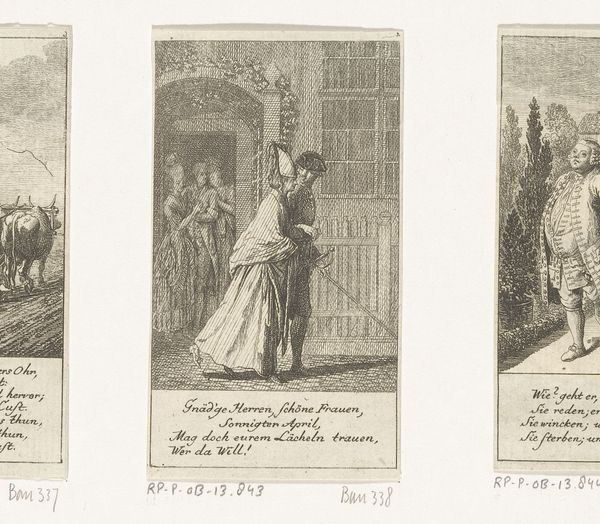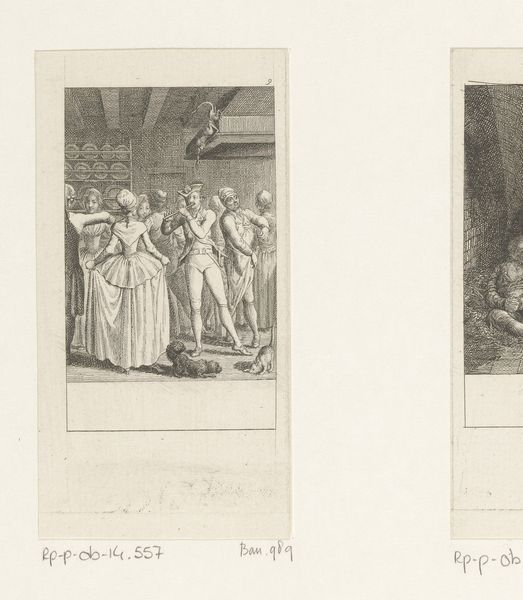
Twee scènes uit Leben, Bemerkungen und Meinungen Johann Bunkels 1778
0:00
0:00
danielnikolauschodowiecki
Rijksmuseum
Dimensions: height 169 mm, width 212 mm
Copyright: Rijks Museum: Open Domain
Curator: Here we have Daniel Nikolaus Chodowiecki's "Twee scènes uit Leben, Bemerkungen und Meinungen Johann Bunkels" from 1778, held here at the Rijksmuseum. It’s an engraving presenting two distinct scenes side by side. What's your initial impression? Editor: Well, my first thought is how intimate these scenes feel, despite the formal dress of the figures. There's a real sense of private lives on display. The rendering in monochromatic line-work reinforces a quietness, wouldn't you agree? Curator: Absolutely. The line work is really masterful, considering this is an engraving. Notice how it delineates form while also describing the textures of clothing, architecture, and even the foliage. It makes me think about the printmaking process of the time, and the artisanal labor needed to create it. Editor: And that labor occurred within a very specific social hierarchy. Looking closer, in the scene to the right we are witnesses to a ceremony; I read that as marriage or perhaps an engagement being solemnified. Consider how these rites shape relationships within 18th century European culture. It tells us much about inheritance, class and the role of women at this moment in time. Curator: Yes, the socio-economic implications of this moment are significant. The labor to create clothing for the scene on the right would cost an arm and a leg in the 1770s. Moreover, the choice of line engraving, as opposed to say etching or aquatint, really shows a conscious decision by the artist in presenting a sense of high society. Editor: The figures almost appear staged; consider the woman throwing horseshoes to the left. It almost is symbolic of fate, as marriage for women during this time was, by and large. How would that change when we incorporate a history of women perspective? Curator: Good point. Bringing these critical questions of the late 18th century really help reveal an art historical view that allows us to engage critically. Editor: Precisely! These glimpses into the past open up a wealth of contemplation on both past and present inequalities and biases, don't you think? Curator: I agree, while analyzing its mode of manufacture and the social relations between producer and consumer lets one engage thoughtfully on both sides. Editor: What a great summation. A perfect note to end on.
Comments
No comments
Be the first to comment and join the conversation on the ultimate creative platform.
